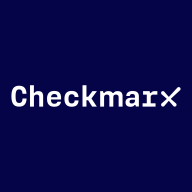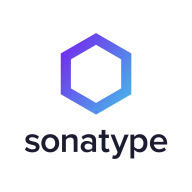

Sonatype Lifecycle and Checkmarx Software Composition Analysis are prominent contenders in the software security and compliance category. While both offer valuable features, Sonatype Lifecycle has an edge due to its proactive scanning and policy enforcement that enhance real-time risk management.
Features: Sonatype Lifecycle is recognized for its robust security integrations with DevOps tools, automatic vulnerability detection, and policy enforcement, which help manage open-source compliance and reduce risks with real-time updates. Users appreciate its capability to block insecure libraries while offering secure alternatives, complemented by comprehensive reporting. Checkmarx Software Composition Analysis stands out with detailed security scans and integrations, focusing on assisting developers in identifying and mitigating vulnerabilities early in the development process.
Room for Improvement: Sonatype Lifecycle could improve by enhancing integration with a broader range of DevOps tools, addressing older library versions better, and expanding language support beyond Java. Users seek enhanced report filtering and more intuitive ticketing systems. Checkmarx Software Composition Analysis may benefit from a more competitive pricing structure, improved UI, faster update speeds, and an ability to handle dynamic analysis better, as well as reducing false positives and providing clearer explanations of vulnerabilities.
Ease of Deployment and Customer Service: Sonatype Lifecycle offers various deployment options, including on-premises, private, public, and hybrid clouds. Its customer service is noted for being helpful and responsive, though more efficient handling of support requests is desired. Checkmarx Software Composition Analysis supports on-premises and cloud deployment, with strong customer support praised for solving issues promptly, although there can be delays with complex requests.
Pricing and ROI: Sonatype Lifecycle's pricing is often seen as competitive, offering bundled services that can be costly for smaller businesses. It is noted for delivering significant ROI by enhancing security and productivity. However, criticism arises over additional paid features. Checkmarx Software Composition Analysis pricing is on the higher side, yet the extensive features sometimes justify the cost for those requiring advanced security measures. Both emphasize ROI through improved visibility and security in software development, although costs are a consideration for users.


Checkmarx Software Composition Analysis (SCA) helps organizations manage the risks associated with open source and third-party components in their software applications. While leveraging open source libraries and third-party dependencies is common practice, it can also introduce security vulnerabilities and license risks.
Checkmarx SCA offers a multifaceted approach to managing these risks by:
Automatically scanning project repositories, build configurations, and manifests to create a comprehensive inventory of all components, including version information and associated licenses.
Performing vulnerability assessments on each component, including identifying and prioritizing actual exploitable or reachable vulnerabilities.
Protecting organizations from software supply chain attacks involving malicious packages, such as the XZ Utils backdoor.
Identifying licenses associated and providing insights into license obligations, restrictions, and potential conflicts.
Integrating seamlessly into existing development workflows and CI/CD pipelines.
Providing actionable remediation guidance to help organizations address identified vulnerabilities and compliance issues effectively.
Sonatype Lifecycle is an open-source security and dependency management software that uses only one tool to automatically find open-source vulnerabilities at every stage of the System Development Life Cycle (SDLC). Users can now minimize security vulnerabilities, permitting organizations to enhance development workflow. Sonatype Lifecycle gives the user complete control over their software supply chain, allowing them to regain wasted time fighting risks in the SDLC. In addition, this software unifies the ability to define rules, actions, and policies that work best for your organizations and teams.
Sonatype Lifecycle allows users to help their teams discover threats before an attack has the chance to take place by examining a database of known vulnerabilities. With continuous monitoring at every stage of the development life cycle, Sonatype Lifecycle enables teams to build secure software. The solution allows users to utilize a complete automated solution within their existing workflows. Once a potential threat is identified, the solution’s policies will automatically rectify it.
Benefits of Open-source Security Monitoring
As cybersecurity attacks are on the rise, organizations are at constant risk for data breaches. Managing your software supply chain gets trickier as your organization grows, leaving many vulnerabilities exposed. With easily accessible source code that can be modified and shared freely, open-source monitoring gives users complete transparency. A community of professionals can inspect open-source code to ensure fewer bugs, and any open-source dependency vulnerability will be detected and fixed rapidly. Users can use open-source security monitoring to avoid attacks through automatic detection of potential threats and rectification immediately and automatically.
Reviews from Real Users
Sonatype Lifecycle software receives high praise from users for many reasons. Among them are the abilities to identify and rectify vulnerabilities at every stage of the SDLC, help with open-source governance, and minimize risk.
Michael E., senior enterprise architect at MIB Group, says "Some of the more profound features include the REST APIs. We tend to make use of those a lot. They also have a plugin for our CI/CD.”
R.S., senior architect at a insurance company, notes “Specifically features that have been good include:
• the email notifications
• the API, which has been good to work with for reporting, because we have some downstream reporting requirements
• that it's been really user-friendly to work with.”
"Its engine itself is most valuable in terms of the way it calculates and decides whether a security vulnerability exists or not. That's the most important thing. Its security is also pretty good, and its listing about the severities is also good," says Subham S., engineering tools and platform manager at BT - British Telecom.
We monitor all Software Composition Analysis (SCA) reviews to prevent fraudulent reviews and keep review quality high. We do not post reviews by company employees or direct competitors. We validate each review for authenticity via cross-reference with LinkedIn, and personal follow-up with the reviewer when necessary.